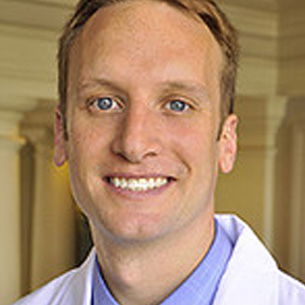Meeting
2017 ASCO Annual Meeting

Dana-Farber Cancer Institute/Brigham and Women's Hospital, Boston, MA
Brian Michael Alexander , Manmeet Singh Ahluwalia , Arati Suvas Desai , Jorg Dietrich , Thomas Joseph Kaley , David M. Peereboom , Naoko Takebe , Jeffrey G. Supko , Serena Desideri , Joy D. Fisher , Megan Sims , Xiaobu Ye , Louis B. Nabors , Stuart A. Grossman , Patrick Y. Wen
Background: The standard of care treatment for newly diagnosed GBM is maximal safe surgical resection followed by two DNA damaging agents, RT and TMZ. Cellular response to DNA damage involves checkpoints that halt the cell cycle to allow DNA repair. AZD1775 is an oral small molecular inhibitor of a nuclear tyrosine kinase Wee1, a key regulator of the G2/M checkpoint. Abrogation of the G2/M checkpoint prevents repair and pushes cells into mitosis with unrepaired DNA damage. AZD1775 was shown to enhance TMZ and RT effects in preclinical models. Methods: The Adult Brain Tumor Consortium 1202 trial (NCT01849146) is a phase I, open label, multicenter dose-finding study of AZD1775 in combination with standard RT and TMZ followed by an IDD study for patients undergoing surgery for recurrent GBM. The dose finding portion is comprised of two arms, one with AZD1775 given Monday through Friday during concurrent RT/TMZ and a second arm given with adjuvant TMZ qd x 5d/28d cycle. Each arm had standard 3+3 design. A combination cohort with both concurrent and adjuvant AZD1775 at MTD and analysis of PK/PD and IDD at MTD in patients undergoing surgery for recurrent GBM followed. Results: 51 patients enrolled in the dose finding arms. For the concurrent arm, the MTD was 200 mg. At 275 mg one patient had grade 3 fatigue and another had grade 4 thrombocytopenia and neutropenia. Two of 6 total patients enrolled at 200 mg experienced DLTs (grade 4 neutropenia and grade 3 ALT elevation). The MTD for the adjuvant arm was 425 mg as 1 of 6 patients had DLT (grade 4 decrease in ANC). At 500 mg, 2 of 3 patients experienced intolerable diarrhea despite prophylaxis. Enrollment in the combination cohort is completed and evaluation of safety is underway. The drug concentration in contrast enhancing and non-enhancing brain tumor was 4-8 x and 0.5-2.6 x greater than plasma, respectively for patients on IDD portion. Conclusions: The MTD for AZD1775 in combination with RT/TMZ is 200 mg qd M-F with concurrent RT/TMZ and 425 mg qd x 5d/28d cycle in combination with adjuvant TMZ. IDD and PK/PD analysis is ongoing to inform the decision to proceed to phase II testing. Clinical trial information: NCT01849146
Disclaimer
This material on this page is ©2024 American Society of Clinical Oncology, all rights reserved. Licensing available upon request. For more information, please contact licensing@asco.org
2017 ASCO Annual Meeting
Oral Abstract Session
Central Nervous System Tumors
Central Nervous System Tumors
Central Nervous System Tumors
NCT01849146
J Clin Oncol 35, 2017 (suppl; abstr 2005)
10.1200/JCO.2017.35.15_suppl.2005
2005
Abstract Disclosures
2019 ASCO Annual Meeting
First Author: Warren P. Mason
2023 ASCO Annual Meeting
First Author: Samuel Ryu
2022 ASCO Annual Meeting
First Author: Shiao-Pei S. Weathers
2023 ASCO Annual Meeting
First Author: Mina Lobbous